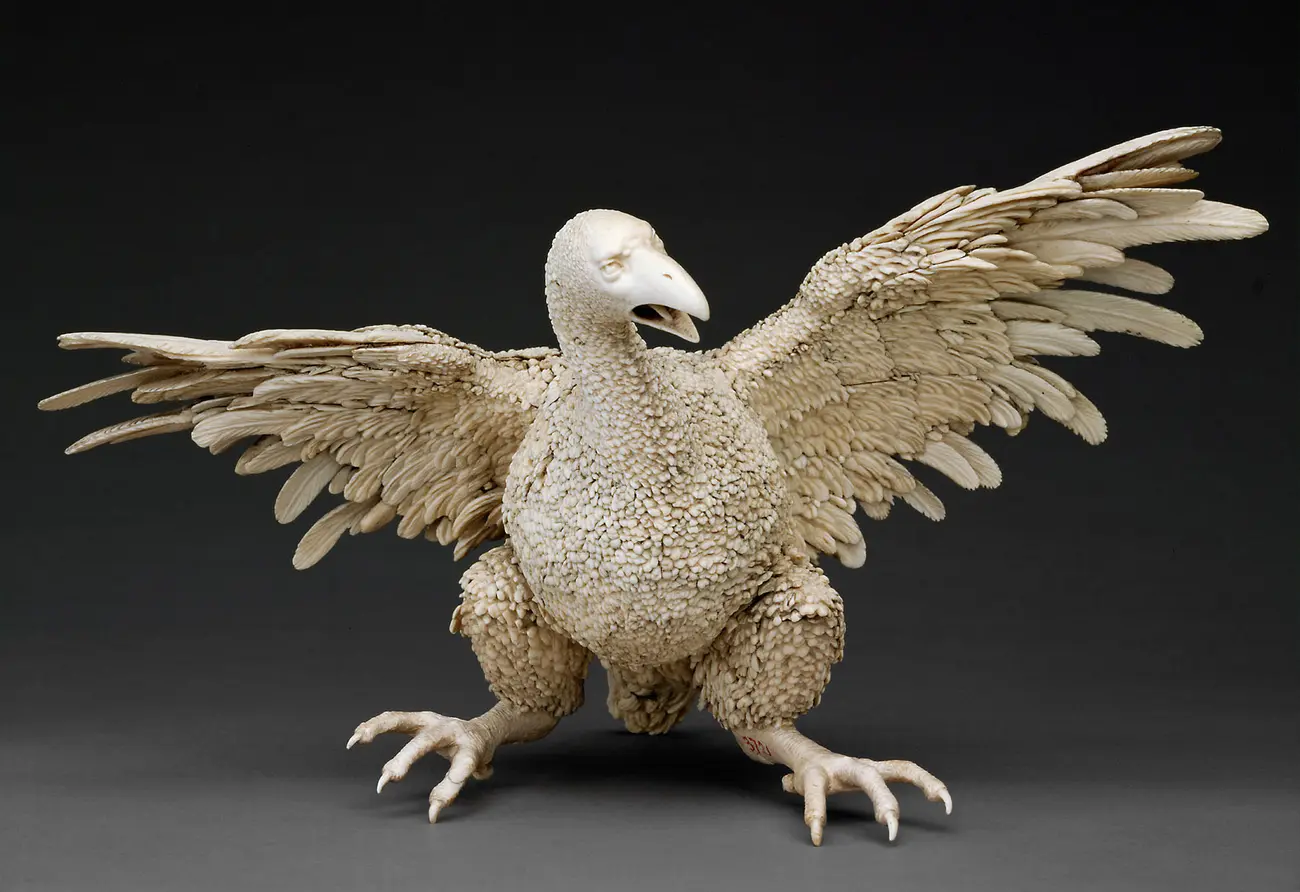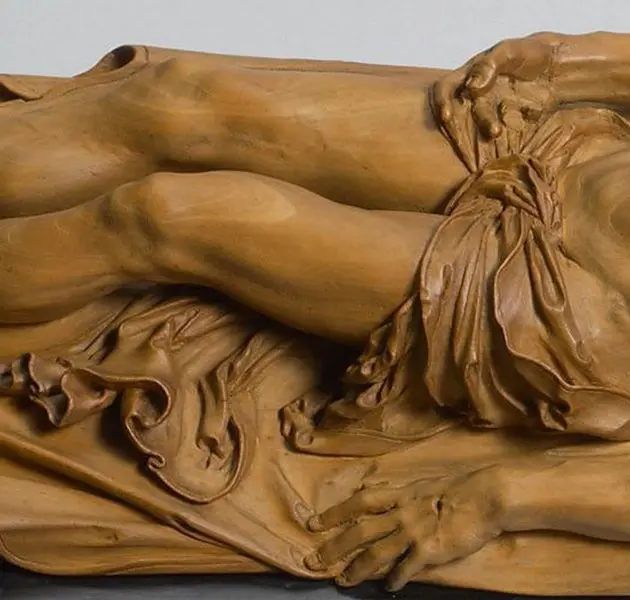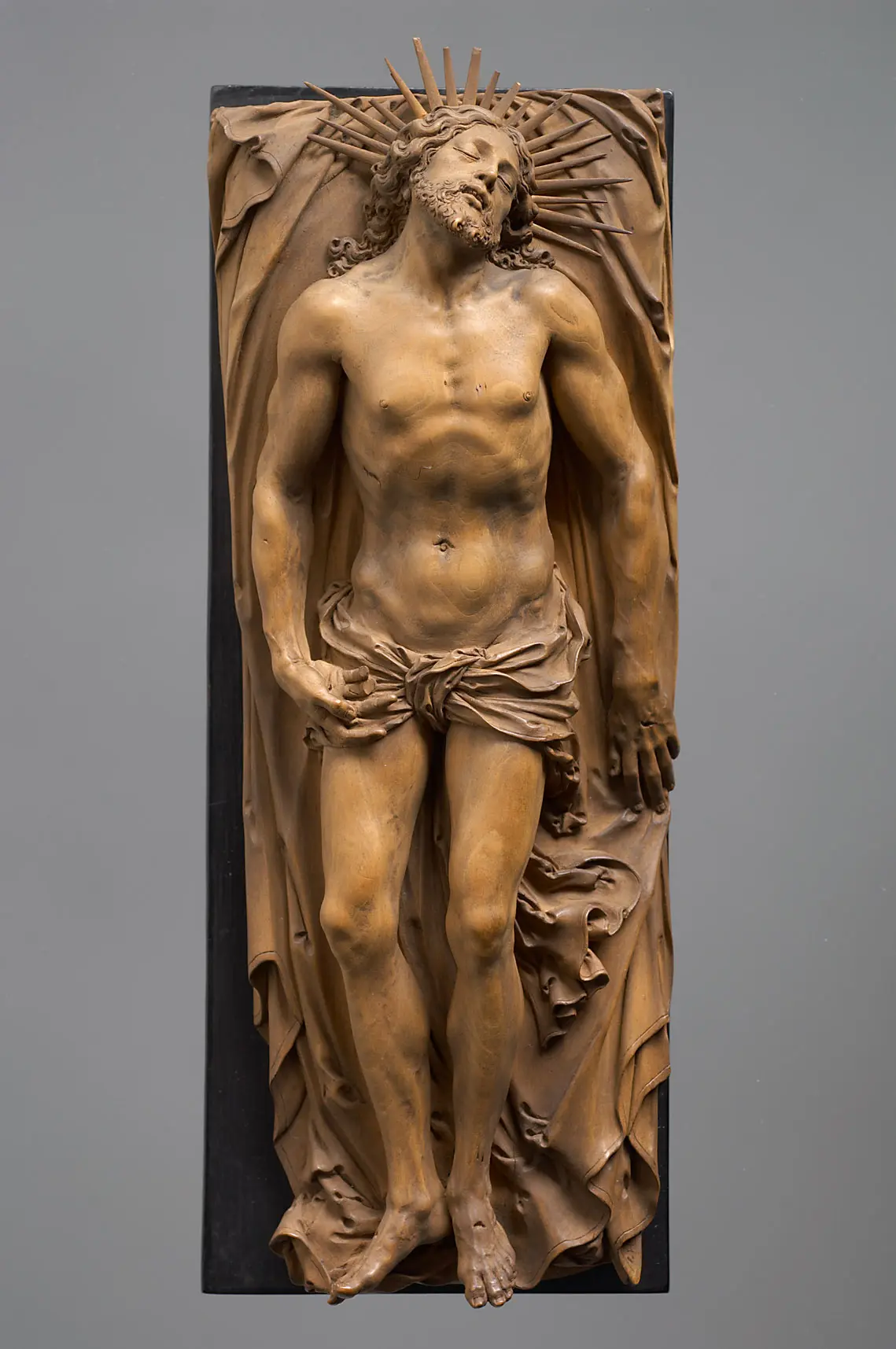Between death and resurrection or: off to new shores.
Bilderfindungen Albrecht Dürers und anderer Künstler der Zeit um 1500, wie Veit Stoß, erlebten im 17. Jahrhundert eine bemerkenswerte Renaissance. Über die Druckgraphik verbreitete Motive vor allem religiöser Bildthemen wurden als Vorbilder aufgegriffen und neu interpretiert. Neben der Wertschätzung für die „alten Meister“ spielte dabei wohl auch der gezielte Rückgriff auf die Kunst im Dienst der Kirche vor der Spaltung in der Reformationszeit eine Rolle.
Christ lies upon an expanse of cloth creased by folds. With the last of his strength he seems to grasp the fabric. Around the fingertips of his left hand small depressions are formed in the cloth.
The skin of the muscular body is strained and tensed

Phoenix, Furienmeister, ca. 1610/20
For the believer who views the sculpture the phase between death and resurrection is imbued with a unique atmosphere. Anguish over Christ’s agonizing death on the cross mixes with the redemptive knowledge of the resurrection.

Hegewald combines with virtuosity different artistic concepts: the harmoniously proportioned body has its origin in Italian influences, whilst the naturalistic rendering of the surfaces and detailed representation of the folds of the loincloth hark back to earlier central European traditions.
More from the series #The Face of Europe
Explore Kunstgeschichten
Discover varied essays on a wide range of artworks from our extensive collection.
